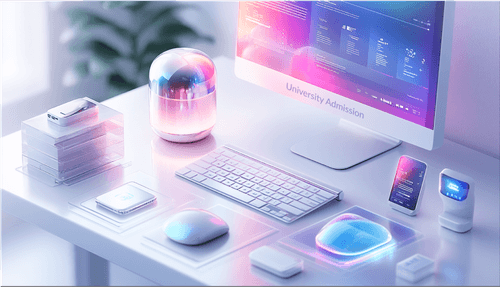Chatbots have rapidly become essential business tools, enhancing customer interactions and streamlining support processes. With growing expectations from users, creating a chatbot that feels both functional and friendly is crucial. Many people encounter chatbots that lack personalization, give generic responses, or make connecting with a live agent hard. These issues can create frustration, causing users to disengage, which impacts a business's customer experience.
This guide explores the practical best practices to improve your chatbot's performance and user satisfaction. By following these tips, you'll learn how to build a intuitive, responsive, and valuable chatbot to users, addressing common pain points. These strategies cover everything from setting up error messages to optimizing your chatbot's placement on your website, helping to resolve common issues that users face when interacting with bots.
Whether you're just starting to develop a chatbot or looking to improve an existing one, this blog provides actionable insights to elevate your chatbot's effectiveness. By incorporating these practices, you can create a seamless and engaging experience, boosting user satisfaction and achieving better customer engagement. Let's dive into the best practices that can turn your chatbot into a powerful tool for users and your business.
What Is A Chatbot
A chatbot is a digital assistant that interacts with users through text or voice, often embedded in websites or messaging apps. It's designed to answer questions, provide support, or assist users with various tasks, allowing businesses to engage customers in real-time. By automating responses, chatbots streamline communication, saving users and support teams time.
Modern chatbots are increasingly sophisticated, using AI to understand user intent and provide relevant information. They can handle routine queries, guide users through processes, and offer personalized recommendations. By acting as a virtual helpdesk, chatbots help companies improve customer experience, ensuring users get timely and accurate assistance whenever they need it.
HubSpot Chatbot Best Practices
.webp)
Creating an effective chatbot requires planning and strategy to ensure it offers value to users and aligns with your business goals. Following best practices can make your chatbot more engaging and helpful, enhancing user experience and providing efficient customer support. This section covers essential tips for building a reliable, user-friendly chatbot that effectively addresses customer needs without causing frustration.
From designing error messages to setting up notifications, these practices cover various aspects that can make your chatbot easy to use, intuitive, and highly functional. By implementing these best practices, you'll develop a chatbot that assists users, builds trust, and strengthens customer relationships.
1. Don't Pretend To Be Human
When creating a chatbot, it's essential to let users know they speak with an automated assistant, not a human. This transparency helps manage expectations and builds trust, as users won't expect complex responses beyond the bot's capabilities. Labeling it as a chatbot also prevents confusion, as users can tailor their questions based on its capabilities. Clearly identifying it as a bot sets a more accurate tone for interactions.
2. Create An Error Message
Including an error message ensures users know what to do if the chatbot doesn't understand their request. A simple, friendly message explaining that the bot didn't catch their input, along with suggestions on rephrasing, keeps users engaged rather than frustrated. This feature is crucial in preventing users from feeling abandoned. It's also helpful to guide them toward other resources, like FAQs or contact options, so they get help.
3. Add Value Before You Extract Information
Before asking users for personal details, offer value by providing a solution, relevant content, or useful information. This approach establishes a positive rapport, making users feel appreciated rather than feeling like they're being interrogated. When users see value upfront, they're more willing to share information, as they feel they're receiving something beneficial in return. This builds trust, essential for a successful, user-centered chatbot experience.
4. Economize Branches
Keeping conversation branches streamlined is essential for an efficient and user-friendly chatbot experience. Users may become overwhelmed or confused when the bot presents too many options or complex pathways. Focus on direct answers and essential functions, limiting unnecessary steps so users can find what they need quickly. This approach ensures smoother conversations, reduces the chance of misdirection, and helps users reach resolutions without hassle.
5. Consider Page Targeting
Use page targeting to show specific chatbot messages based on users' visiting page. For example, a product page could have a chatbot tailored to answer product-related queries, while a blog page might offer resources on the topic discussed. Page targeting makes interactions feel more relevant, which can boost engagement and lead to higher user satisfaction. By making the bot's responses contextually appropriate, you're offering a more efficient experience.
6. Prioritize Your Chatbot
Positioning the chatbot prominently on your website, such as in the bottom corner of the page, makes it easy for users to access whenever they need assistance. A visible chatbot can increase engagement by ensuring users don't overlook it. It's essential for your chatbot to be easy to locate so it can serve as an immediate help resource, which also demonstrates that user support is a priority for your business.
7. Set Hours For Live Chat And Routing
If your chatbot is linked to live support, establish specific hours when users can connect with an agent. Displaying available times lets users know when to expect real-time support versus automated responses. This scheduling helps set realistic expectations, making users feel more confident in getting their needed help. Proper routing during live hours also ensures that users are directed to the correct agent, creating a seamless support experience.
8. Draft Your Playbook In A Document Before Building Bots
Creating a playbook before building a bot helps you map out the bot's conversation paths, objectives, and user flow. This initial planning phase is crucial for identifying potential issues and aligning the bot's design with user needs. By detailing the chatbot's responses and functions in a document, you can ensure that every part of the bot's interaction is thought out, helping avoid hiccups during the build and launch phases.
9. Don't Complicate Your Chatbot
A simple chatbot design is easier for users to navigate, improving overall satisfaction. Avoid adding too many features or overly complicated paths, as this can overwhelm users and make it harder for them to reach their goals. A straightforward chatbot is more likely to provide a smooth experience, encouraging users to engage without hesitation. Focusing on essential functions also reduces development time and ensures the bot is easy to maintain.
10. Use Personalization
Adding personalization to your chatbot makes interactions feel more engaging and relevant. Addressing users by name or referring to their previous interactions with the bot can help customise the experience. This personal touch increases user satisfaction, as people feel more connected to the bot and view it as a helpful, tailored tool. Personalization shows users that their needs are prioritized, which can strengthen customer loyalty.
11. Provide The Option To Contact A Human
It's essential to offer users a way to reach a human agent for more complex issues. Chatbots, while efficient, have limitations, and users should have an easy option to escalate their queries. This feature ensures users feel supported, even if the chatbot doesn't have all the answers. Giving this option enhances the user experience, demonstrating that there is always a route to more personalized support if needed.
12. Set Up Notifications
Notifications let your team stay informed about the bot's interactions and help monitor user inquiries in real-time. Your team can step in when needed by receiving alerts for unresolved issues or high-priority messages, ensuring no critical customer inquiries slip through the cracks. Notifications enable quick responses to important topics, enhancing the bot's performance and overall user satisfaction.
13. Preview Bot Before Sending It Live
Testing the chatbot thoroughly before making it public helps you catch any issues that might disrupt the user experience. Use the preview feature to simulate user interactions, ensuring the bot's pathways, responses, and error messages work as intended. This quality check reduces the chances of errors, helping to launch a polished chatbot that users can rely on. A well-tested bot is more likely to deliver smooth, error-free interactions.
14. Build Dashboards
Dashboards offer insights into how the chatbot performs by tracking metrics like user engagement, response times, and frequently asked questions. This data helps you understand what works well and where improvements are needed. By having a dashboard, you can make data-driven decisions to refine the bot's effectiveness, ensuring it continually meets user needs and enhances the overall experience.
15. Adjust Over Time
Optimizing your chatbot regularly based on performance data and user feedback helps it stay relevant. As user expectations and business needs evolve, continuous adjustments ensure the chatbot remains a valuable resource. Regular updates align the bot with user behavior, improving engagement and satisfaction. By monitoring and adjusting, you create a chatbot that evolves with its audience, supporting long-term success and positive interactions.
Is Human Bandwidth A Constraint
When implementing a chatbot, assessing your team's capacity for handling complex queries that may go beyond the bot's scope is essential. A chatbot can address straightforward inquiries efficiently, but when intricate questions arise, you'll need human support ready to step in. Ensuring adequate human bandwidth keeps the user experience seamless, reducing frustration if the bot encounters limitations.
Assessing your team's availability and workload helps determine whether your chatbot should handle more complex tasks or stick to basic queries. Designing the bot with clear boundaries becomes vital if human bandwidth is limited. This strategic balance enables the chatbot to perform well within its limits, maintaining positive interactions and consistent support quality.
Do You Need To Collect Data
Deciding whether to gather user data through your chatbot is important for personalization and service improvement. Data collection, like names or contact details, allows you to tailor responses, track interactions, and provide a more customized experience. However, ensure users understand why their data is needed and reassure them about privacy.
If data collection is necessary, it's best to ask for information progressively rather than all at once. This approach reduces the chance of overwhelming users and builds trust by offering value before requesting details. Thoughtful data collection enhances the chatbot's relevance, helping it adapt to user needs without compromising their comfort or security.
Is The Cost Of Mistakes Low
Determining the potential impact of chatbot errors is crucial before deploying it widely. If mistakes by the chatbot would only result in minor issues, then it's reasonable to give the bot more freedom to handle user interactions independently. However, if errors could lead to negative experiences or business risks, carefully designing and testing the bot becomes essential.
When the cost of mistakes is low, the chatbot can be more exploratory, addressing a range of queries with minimal oversight. But if errors may be costly, it's wise to focus the chatbot on simpler tasks and build clear escalation paths for complex queries. This approach minimizes risk and maintains a positive, dependable user experience.
Conclusion
Creating effective chatbots is essential for improving user experience and supporting business objectives. Following these best practices can help you design a chatbot that engages users and meets their needs. Remember to evaluate its performance regularly and make updates as needed. For a smooth chatbot-building experience, Copilot.Live provides advanced features and user-friendly tools, making the process easier with Copilot.Live, you can develop a dynamic chatbot that enhances customer interactions and offers valuable insights into user behavior.

.webp)
















